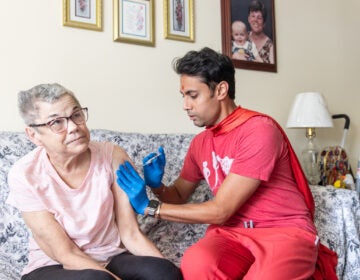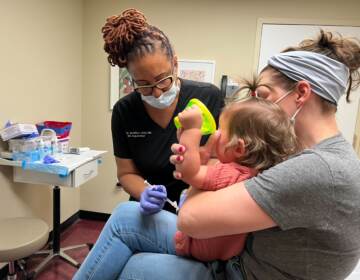A disturbing medical consensus is growing. Here’s what it could mean for Black patients with coronavirus.
The “save-the-most-lives” approach will exacerbate the already-existing health care inequalities, argues Dr. Hannah McLane, an occupational medicine physician.
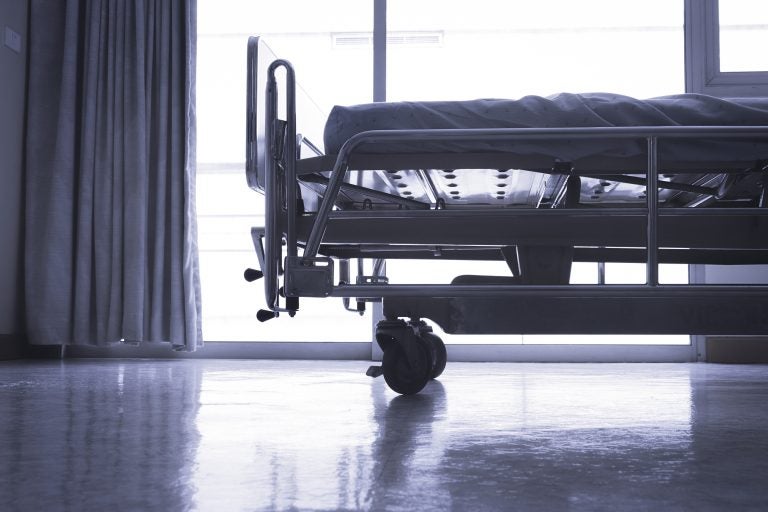
Empty hospital bed. (arPhoenixphoto/BigStock)
You are a physician on a ward full of COVID-19 patients, and you find yourself faced with a difficult decision: you have two patients who have come in with similar symptoms—shortness of breath, cough, and fever. Both have lungs full of fluid, and both are rapidly deteriorating. Both urgently need ventilators. One is a 56-year-old African American woman, with poorly controlled diabetes. The other is a 56-year-old man, who is white, and has no medical comorbidities. There is only one ventilator. What would you do?
The United States is now approaching an unprecedented level of medical resource scarcity. The projected need for ventilators will far outweigh supply, and there will be critical shortages of ICU beds for COVID-19 infected patients as well as medical personnel, medications, and personal protective equipment (PPE). Peak demand is projected to occur in two weeks in some locations. Some people will be denied care.
A consensus is developing around the save-the-most-lives principle in medical journals and popular press: if we have critical shortages, give the ventilator to the person with less comorbid diseases, the healthier one, the one who will most enjoy their life after recovery. Save as many people as you can, whatever that takes. This is an emergency.
Guidelines are now being created in many regions to address these difficult decisions. These guidelines will assist physicians in deciding who gets access to scarce resources. Hospitals are being told by federal civil rights officials that they will not be allowed to discriminate based on disability status, race, age or religion. They also shouldn’t base the decision on a person’s ability to pay. On the surface, this appears to protect the most vulnerable members of society.
To fully understand implications of the save-the-most-lives principle, however, we need a crash course in distributive justice. Several years ago, I created a series of animated videos about medical resource scarcity that has been used in public health curriculum and resident education modules at Harvard School of Public Health, MIT, and the University of Pennsylvania. These thought experiments were designed in collaboration with Dan Wikler, professor at Harvard School of Public Health, who has also served as staff ethicist at the World Health Organization (WHO).
This series uses the technique of thought experiments—short scenarios aimed at helping someone think through their values without extraneous details. The so-called ‘Trolley Problem’ is perhaps the most famous ethical thought experiment.
Here is an example of a thought experiment that I present to other physicians: You are tasked to decide where to set up a medical clinic for hypertension, either in a wealthy white suburb or an urban center with a majority black population. The urban population has low literacy, high rates of the uninsured, and higher rates of hypertension. You only have resources to build one clinic, where would you put it?
In this case, many doctors are horrified when they realize the biggest bang for their health care buck – implementing the save the most lives principle – would lead them to building a clinic in the suburbs and leaving the urban population without care. The suburban population would be more adherent to medications, less comorbid disease, and more able to pay for medications in the long run. If this choice would save the most people, why doesn’t it seem right?
I have sat in on WHO ethics deliberations in Geneva to determine guidelines for scarce medical resource allocation, and one would be hard-pressed to find an ethics document whereby all the authors fully agreed on what was written. It is always a compromise. Ethical solutions are always value-laden, and there are always many possible ‘correct answers’.
In contrast to a pure save-the-most-lives approach to resource scarcity, there is also an approach that takes into account the importance of providing resources to the least well-off people — these are people who might actually require more resources to reach the same level of health. A well-known distributive justice philosopher, John Rawls, in his book, A Theory of Justice, points out that it is sometimes ethically justified to give more resources to the least well-off if these resources ‘are to be to the greatest benefit of the least advantaged members of society’.
Returning to our original two patients, if our primary goal is to save the most people, the answer is clear: save the white man without comorbidities. He will be the most likely to survive of these two patients if given the ventilator. We do this when faced with every decision and we have done our best to save the maximum number of people in the population, not discriminating based on race, gender, disability, religion, or ability to pay.
In the save-the-most-lives argument, however, we are leaving out a critical fact: there are historical and systemic reasons why this Black woman is likely to have poorer health. As a Black person in the United States, she is less likely to have insurance, and more likely to have chronic health conditions, such as heart disease. She is less likely to be health literate, thus, may have more trouble understanding how to take her medication.
Due to her race and gender, she is more likely to experience chronic daily traumas and microaggressions which may exacerbate her health conditions. Furthermore, she is less likely to trust the health care system to take care of her, and more likely to wait to seek care until her symptoms are more advanced. These factors could contribute to her having poorer health and being ‘less likely to survive’ between our two patients.
If we strictly adhere to ‘save the most lives’ principle, we will be treating more white people, more men, more wealthy people. Black people are dying in record numbers from COVID-19, so, this ethical oversight may already be playing out. We can’t say that we aren’t discriminating based on race or ability to pay, while algorithmically prioritizing the most likely to survive.
In this country, these things are intimately related. Exclusively ‘saving the most lives’ will be exacerbating the already-existing health care inequalities. Pandemics are emergencies, yes, but we also need to adhere to our core ethical values at these times too. Perhaps now even more than ever. This is when it really counts.
The World Health Organization tells us that even in times of crisis, we might choose to give preference to the less well-off. In other words, we might sometimes choose to give more resources to save sicker people at the expense of saving a greater number of healthier ones. We can aim to save the most lives, but this doesn’t have to be our only guiding principle. And this can be an ethically ‘correct’ choice. Even during an emergency, there is room to consider the past inequalities that have brought about the current conditions.
Our patient coming in needing a ventilator may have co-morbidities because she has already lived a life of deprivation and discrimination. It might be worth giving her more resources now, precisely because she has received less resources in the past. It is a form of affirmative action of medical resources, if you will.
Physicians need to know that if they choose to give the ventilator to the Black woman – or if our guidelines provided to them reflect this value – there is an ethical argument to defend this choice. There is nothing ‘correct’ about the ‘save the most lives’ argument; it is just one of many ethically defensible options and need not be followed rigidly. Our guidelines and algorithms for doctors on the frontlines should be clear about this.
In my opinion, what defines a ‘fair’ resource allocation choice? It is one that considers not just the number of lives saved, but also what is behind those lives. Being fair about where our efforts go and not being biased based on a deluded notion that we are all starting out on a level playing field. Our two patients outlined above did not start off on a level playing field at the beginning of the COVID-19 pandemic. They didn’t walk into the hospital on a level playing field, nor were they even born with equal opportunities. Fair allocation choices take this into account.
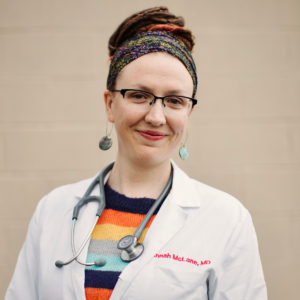
Hannah C. McLane, MD, MA, MPH is a physician and psychotherapist. She is founder of the SoundMind Project, a West Philadelphia-based nonprofit that provides mental health services and psychedelic psychotherapy to marginalized populations. She received her MPH from Harvard School of Public Health and is passionate about distributive justice ethics. You can like her Facebook and follow her on Twitter @HannahMcLaneMD.
Becoming a storyteller for WHYY, your local public media station, is easier than you might think. Text STORYTELLER to 267.494.9949 to learn more.
WHYY is your source for fact-based, in-depth journalism and information. As a nonprofit organization, we rely on financial support from readers like you. Please give today.



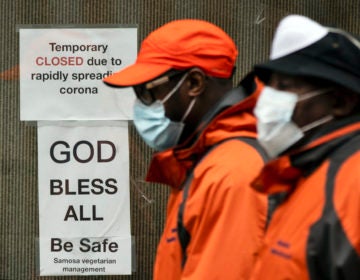
![CoronavirusPandemic_1024x512[1]](https://whyy.org/wp-content/uploads/2020/03/CoronavirusPandemic_1024x5121-300x150.jpg)
